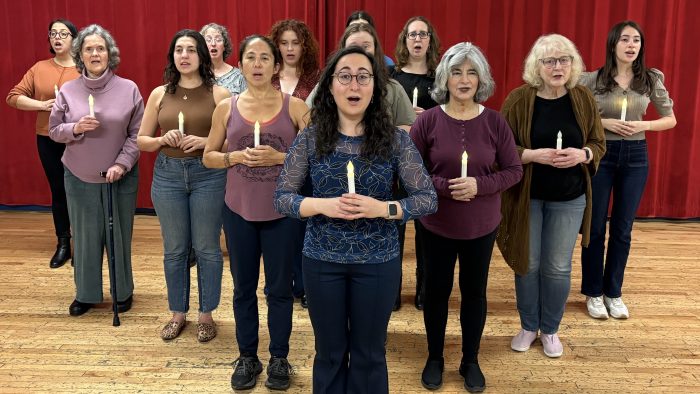One of the most heavily used bike paths in the country, the Hudson River Greenway adjacent to the West Side Highway is overflowing with cyclists, according to Manhattan Borough President Mark Levine.
To solve this 21st century congestion problem, Levine and civic leaders want the state to take away a traffic lane from drivers on the West Side Highway and transform it into a two-way protected bike lane.
“It is in a sense a victim of its own success,” said Levine during a press conference next to the highway at Chambers Street Tuesday. “During peak hours, during the morning commute, the evening commute, on evenings and weekends when the weather is nice, it is simply too crowded on the Greenway.”
The beep penned a letter to State Department of Transportation Commissioner Marie Therese Dominguez to study a bike lane on the highway. Unlike most city streets, Albany oversees the road because it’s part of the state highway system, officially dubbed West Street or Route 9A.
Levine’s pitch is based on a previous proposal by local community groups and bike advocates to convert a lane on four miles of Route 9A into a bike path from Chambers Street to West 57th Street, similar to the switch on the Brooklyn Bridge’s roadway former Mayor Bill de Blasio implemented last year.
The lane on the bridge led to a boom in new bicycle traffic after years of declining crossings as cyclists had to share a narrow path with pedestrians.
“It’s been a fabulous success. It has made the Brooklyn Bridge safer and easier and it’s a great example for what’s possible on the West Side,” Levine said.
More dedicated space for pedalers would also encourage some drivers to switch to bikes, Levine argued, especially as the state plans to charge motorists entering Manhattan’s Central Business District below 60th Street by the end of next year, a project also known as congestion pricing.
“Congestion pricing can’t just be about the stick of a fee for drivers. It has to be about the carrot of making other means of transportation easier and safer and more attractive,” Levine said.

The new path would give more space to people riding e-bikes, such as delivery workers. The state currently bans e-bikes and other motorized vehicles from the Hudson River path, even though there are several docks for Citi Bikes, including their battery-powered bikes, along the riverfront.
Community boards and council members along the corridor came out in support the project, with one local pol saying the crowding on the current bike path has become dangerous.
“When we see tourists just wandering around the bike path, for every cyclists — I’m a cyclist myself — it brings a lot of fear, it makes you stop or take a sharp left turn, which could create incidents or accidents,” said Council Member Chris Marte, who represents the Lower Manhattan portion.
The state DOT has in the past been uninterested in removing a car lane from the highway, but a spokesperson said the agency is reviewing Levine’s letter.
“The State Department of Transportation is in receipt of the letter and reviewing it,” said Glenn Blain in an email.
The governor’s office referred a comment request to the DOT.


































